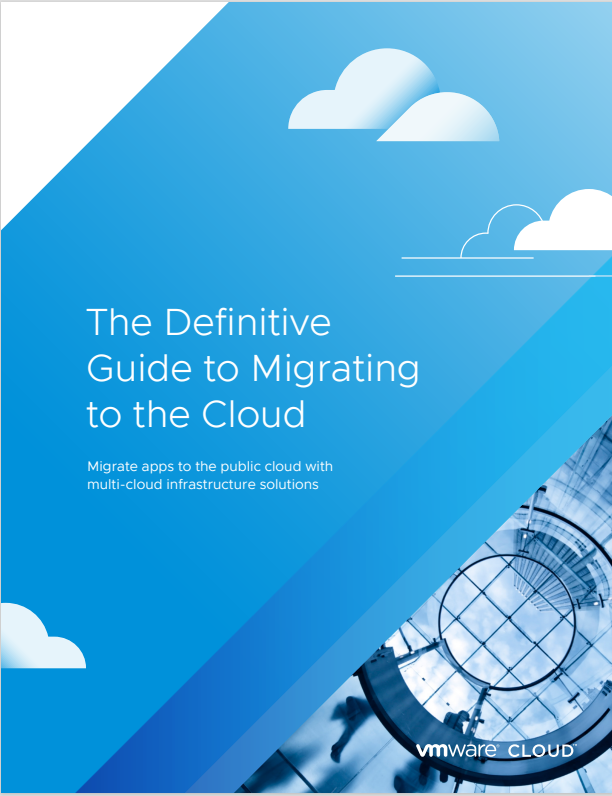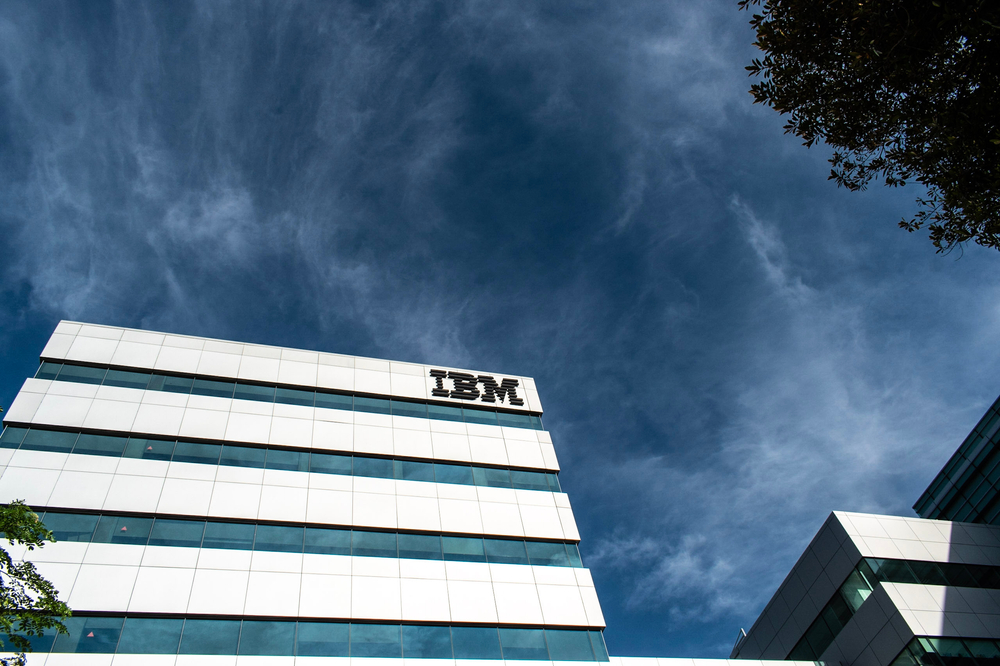Uncovering the hidden costs of cloud migration
The benefits of the cloud are in danger of being outweighed by an assortment of hidden costs

Most organisations are already aware of the benefits of cloud migration. It enables them to expand their business whilst using existing infrastructure and can have a positive impact on data growth and customer experience.
RELATED RESOURCE

The definitive guide to migrating to the cloud
Migrate apps to the public cloud with multi-cloud infrastructure solutions
Not only that, but the cloud can also offer enhanced security and increase productivity, which is why IT leaders are all including the cloud as part of their digital transformation strategy, accelerated in part by the pandemic.
The cloud helped businesses through massive disruption, and having successfully continued operations, the cloud has shown resilience and the reason why cloud adoption will continue to grow, with spending on public cloud services expected to reach $396 billion in 2021, growing a further 21.7% in 2022 to reach $482 billion, according to Gartner, Inc.
But with all that the cloud has enabled, and continues to offer, could businesses end up burdened by hidden costs in the years to come?
Vendors can make their cloud offerings appear considerably more cost-effective than in-house solutions, but if business owners don’t need to take advantage of the complete technology that the cloud offers, the cost of adoption may be greater than necessary.
For example, there’s the risk of cloud outages that impact downtime (infrequent, but possible) so if you’re thinking about moving operations to the cloud, it’s critical that you’re aware of as many of the hidden costs as possible.
Unexpected costs of migrating to the cloud
Cloud migration is never a simple process. Pitfalls can wait either in plain sight - such as upfront monetary costs, often large but easily legislated for - or in the shadows. It’s these hidden costs that are the real debilitator. Without thorough planning or technical understanding, enterprises may find themselves far over budget and too deep to escape.
Get the ITPro daily newsletter
Sign up today and you will receive a free copy of our Future Focus 2025 report - the leading guidance on AI, cybersecurity and other IT challenges as per 700+ senior executives
Hidden costs often appear in the form of operational and recurring expenditures, such as the pay-as-you-go cloud model offered by vendors. Without the required level of expertise within the enterprise, pay-as-you-go models may be misunderstood.
Enterprises can pay for vast amounts of cloud storage to house swathes of data. With no storage limit, data will continue to be stored on the cloud servers, bringing an incremental cost. What’s more, it’s likely that most of this data doesn’t need to be stored in the cloud. On-premise servers still have a role to play, while many enterprises are guilty of blanket decisions when it comes to data, rather than taking the time to sift through what’s relevant and important to maintain.
To shine a light on this blind spot, enterprises must ensure their in-house IT departments are brimming with relevant expertise. Existing employees can be upskilled to plug skills gaps, but sooner or later there will be a problem or a technology that stretches the department to breaking point.
Acquiring external talent at some point down the road is unavoidable, in the form of consultants, new hires, and vendor support. Due to the unpredictability of cloud migrations, both in terms of surfacing issues and in the introduction of emerging technologies, having the foresight to realise which specific skills are going to be required down the line is not always apparent, adding to this expense.
This unpredictability stems from the fact that organisations will want to tailor their cloud technology to integrate seamlessly with their existing set of systems. As the web of infrastructure expands, it becomes more difficult to maintain optimum performance levels because of the complexity that customisation brings. As deployments are scaled, their problems and complexities are also magnified, forcing the enterprise to invest in additional resources.
How to calculate whether you can afford cloud migration
Though the specific amount of hidden costs remain a mystery until they are encountered, that doesn’t mean that when devising a cloud migration budget, they shouldn’t be accounted for. Budgets should have the buffering capacity and be scalable, just like the cloud technology it will be invested in.
It's certain that the cloud migration journey is by nature unpredictable, yet there is one consistent element that can be counted on: change. The enterprise and cloud migrations are both dynamic. Performance requirements, changes in usage and market needs, vendor support packages, will all be affected at one point or another.
This acts as one of the major advantages and disadvantages of the cloud. On the other hand, on-premise infrastructures also suffer from these faults.
Enterprises can start their cloud journeys by taking an audit of current IT infrastructure costs in order to reveal what they are currently paying. Then try and estimate the potential cloud infrastructure costs. For this there must be an understanding of the network, storage, and database capacity required to run applications selected to operate on the cloud, Typically cloud pricing structures are quite complex, however, vendors are increasingly simplifying their offerings.
Weighing the pros and cons of cloud migration
With the costs of cloud migration identified, it’s up to the individual enterprise only to decide whether the journey is worthwhile. Budgets, industries, and priorities vary, but what is certain is that at least partial migrations to the cloud will bring a host of benefits that ultimately do make businesses more competitive.
For those struggling to finance migrations, it may be time to look for more cost-effective methods. Cloud migrations do not need to happen en masse. Internal inspections can dictate which applications will benefit the most from integrating with the cloud. If the value isn’t foreseen in transferring a certain application, then don’t.
Of course, risk is a factor in every decision, particularly one with high financial implications. Enterprises can complete a thorough risk analysis by uncovering the hidden costs of their planned cloud migration and comparing them to existing costs and their risk appetite. Risks can’t be eradicated but they can be accounted for.
-
 Bigger salaries, more burnout: Is the CISO role in crisis?
Bigger salaries, more burnout: Is the CISO role in crisis?In-depth CISOs are more stressed than ever before – but why is this and what can be done?
By Kate O'Flaherty Published
-
 Cheap cyber crime kits can be bought on the dark web for less than $25
Cheap cyber crime kits can be bought on the dark web for less than $25News Research from NordVPN shows phishing kits are now widely available on the dark web and via messaging apps like Telegram, and are often selling for less than $25.
By Emma Woollacott Published
-
 Say goodbye to walled gardens, Oracle is doubling down on multi-cloud
Say goodbye to walled gardens, Oracle is doubling down on multi-cloudNews Oracle is still focused heavily on driving multi-cloud adoption, doubling down on a message that came out of Oracle CloudWorld 2024 in Las Vegas a few months ago.
By George Fitzmaurice Published
-
 Overcoming DevOps challenges in multi-cloud environments
Overcoming DevOps challenges in multi-cloud environmentsIndustry Insights Multi-cloud architectures provide opportunities for growth and agility, but ensuring seamless, scalable, and secure operations remains a challenge
By Rajasekar Sukumar Published
-
 The business value of Dell PowerFlex
The business value of Dell PowerFlexWhitepaper Minimize downtime and boost the productivity of IT staff with software-defined infrastructure
By ITPro Published
-
 Bring your storage from ground to cloud
Bring your storage from ground to cloudWhitepaper Dell APEX Storage for public cloud
By ITPro Published
-
 Why ‘bring your own license’ is a game changer for reselling cloud products and services
Why ‘bring your own license’ is a game changer for reselling cloud products and servicesIndustry Insight Customers are demanding more flexibility and don’t want to lose existing investments when it comes to cloud management - resellers are in a prime position here if they can get the licensing right
By Adam Tarbox Published
-
 Tangible business value from cloud transformation remains elusive
Tangible business value from cloud transformation remains elusiveWhitepaper Discover the top five secrets to mastering cloud for business
By ITPro Published
-
 Cloud-enabled manufacturing
Cloud-enabled manufacturingWhitepaper Operations and IT leaders turn ambition into advantage
By ITPro Published
-
 Realize the full value of your hybrid cloud
Realize the full value of your hybrid cloudWhitepaper An open hybrid cloud platform from IBM and Red Hat is a catalyst for innovation and business value
By ITPro Published